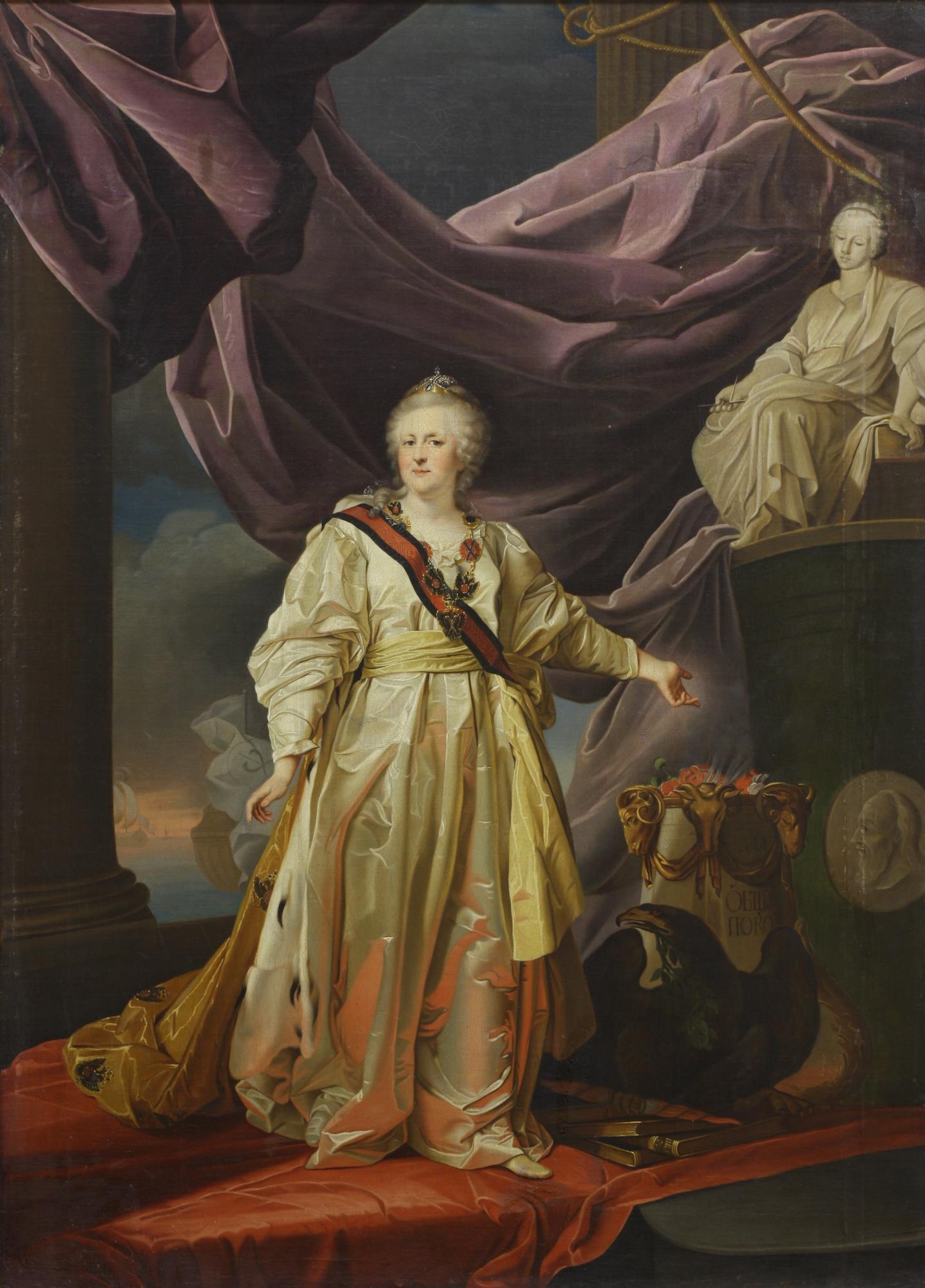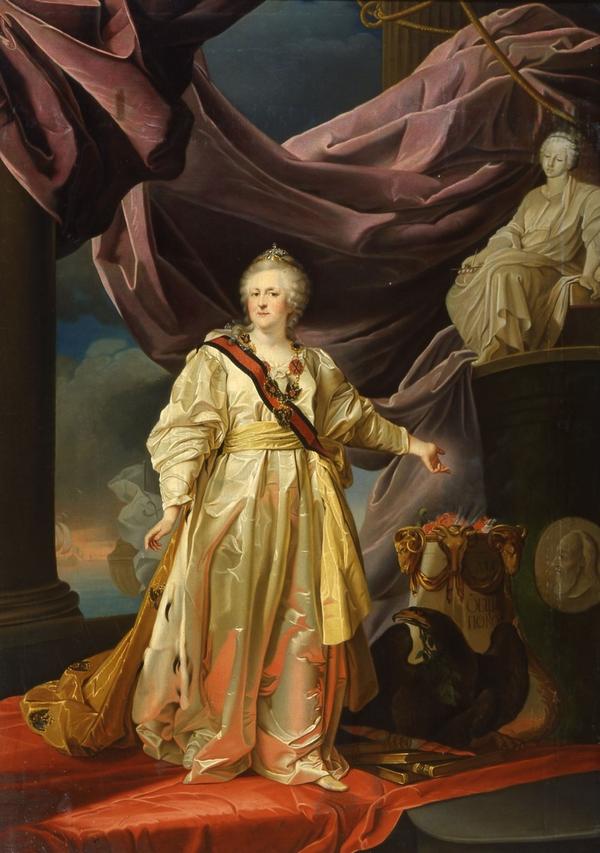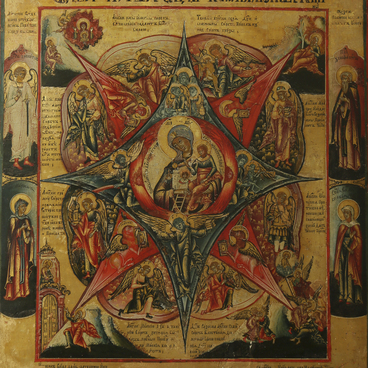Settling down in his St. Petersburg house, Chancellor Alexander Bezborodko commissioned a portrait of the Empress from Dmitry Levitsky. The artist finished the painting in 1783. The Empress herself and her staff were so pleased with the portrait that the artist was commissioned another several paintings.
The grand painting shows the Empress in a hall with a colonnade traditional for full-dress portraits and heavy expensive drapery.
Levitsky painted Catherine the Great as if a little bit from below to make her figure look monumental and majestic as befits the monarch. She is robed in pearl-gold antique-like gown. As if a priestess, Catherine the Great commits poppy flowers to flames on the altar inscribed For Everyone’s Peace. Full-dress portraits usually depicted the subject in full regalia and with decorations. Thus, the Empress is shown wearing a collar with the Order of St. Andrew the Apostle the First-Called and a sash with the Order of Saint Vladimir.
Poet Nikolay Lvov, a friend of the artist, advised him to fill the picture with the symbols of achievements of the Russian state. For example, the ships represent the glorious victories of the Russian fleet in the recent war with Turkey. The pedestal of the Themis statute bears the image of Athian thinker and lawmaker Solon, which is a reference to reforms introduced by Catherine the Great. The books at her feet also symbolise the initiatives and enlightenment of the Empress. Catherine the Great, known for her correspondence with famous European philosophers and extensive reading, established schools and academies and promoted female education. An eagle perching on the books is a symbol of the imperial power.
The grand painting shows the Empress in a hall with a colonnade traditional for full-dress portraits and heavy expensive drapery.
Levitsky painted Catherine the Great as if a little bit from below to make her figure look monumental and majestic as befits the monarch. She is robed in pearl-gold antique-like gown. As if a priestess, Catherine the Great commits poppy flowers to flames on the altar inscribed For Everyone’s Peace. Full-dress portraits usually depicted the subject in full regalia and with decorations. Thus, the Empress is shown wearing a collar with the Order of St. Andrew the Apostle the First-Called and a sash with the Order of Saint Vladimir.
Poet Nikolay Lvov, a friend of the artist, advised him to fill the picture with the symbols of achievements of the Russian state. For example, the ships represent the glorious victories of the Russian fleet in the recent war with Turkey. The pedestal of the Themis statute bears the image of Athian thinker and lawmaker Solon, which is a reference to reforms introduced by Catherine the Great. The books at her feet also symbolise the initiatives and enlightenment of the Empress. Catherine the Great, known for her correspondence with famous European philosophers and extensive reading, established schools and academies and promoted female education. An eagle perching on the books is a symbol of the imperial power.
The Primorye State Picture Gallery received a copy of the portrait from the Pavlovsk Palace Museum in 1967. The copy is made with great skill, and experts believe it to have been painted by a professional artist.



